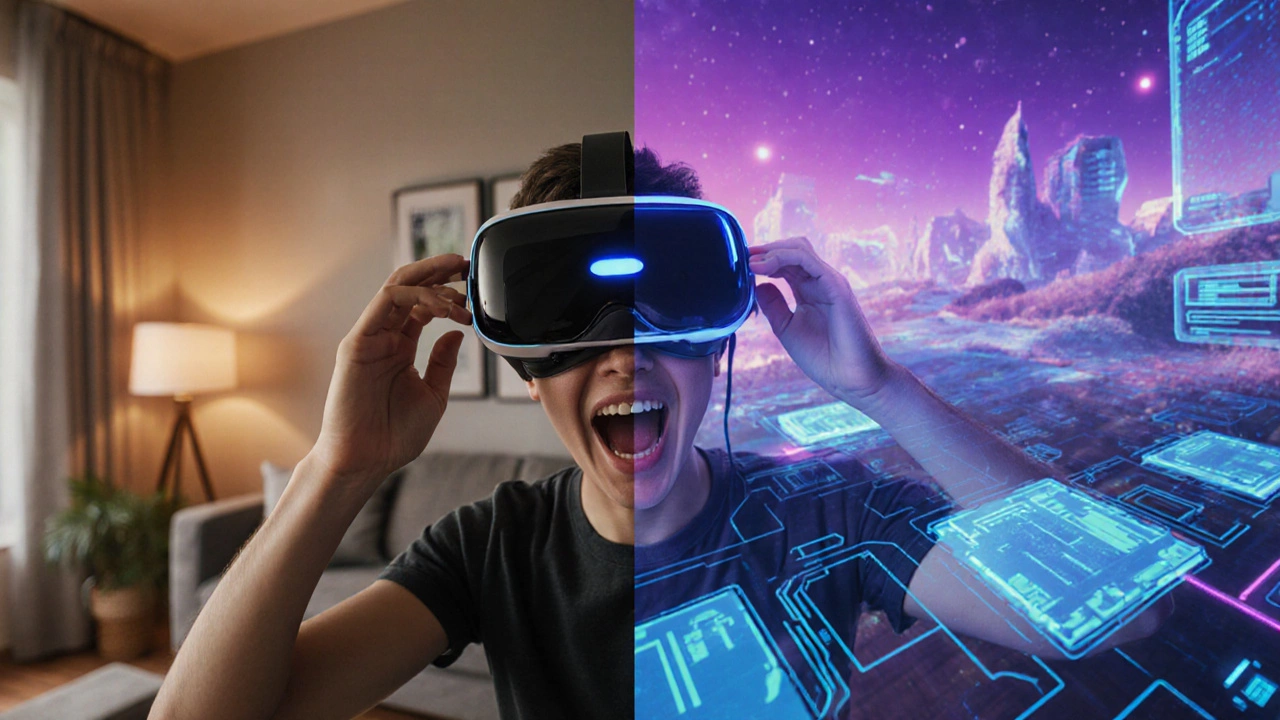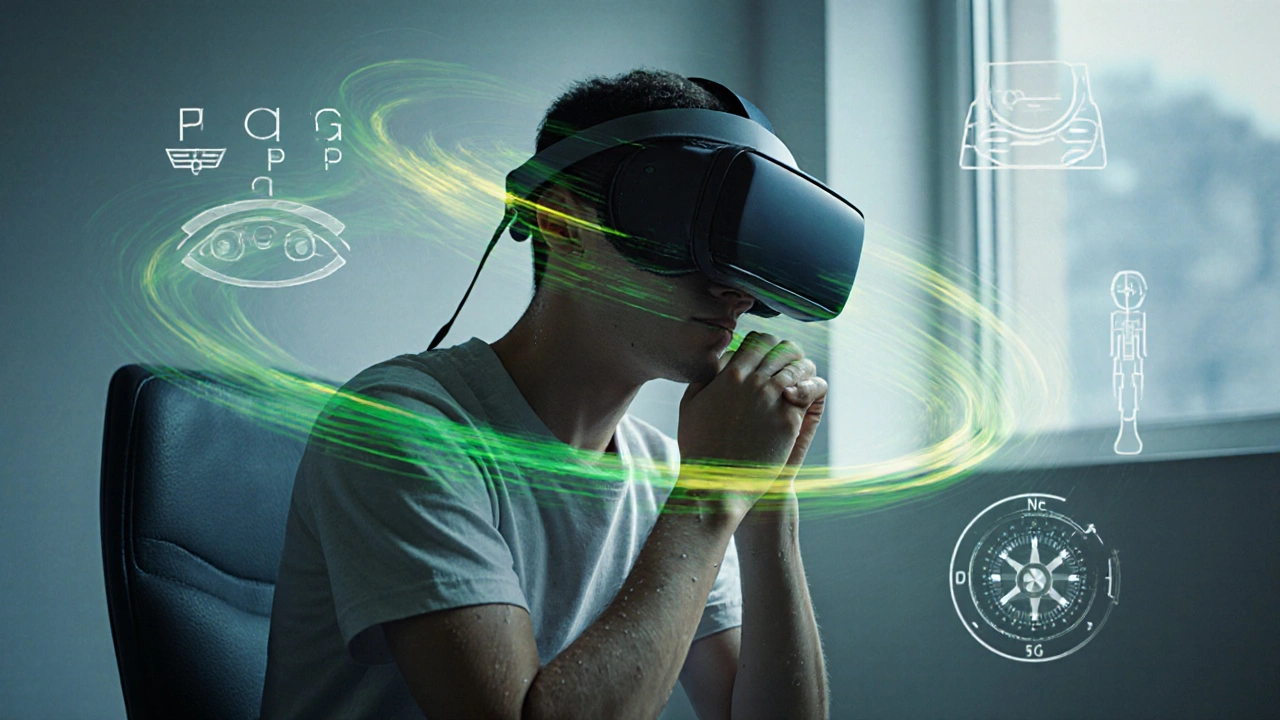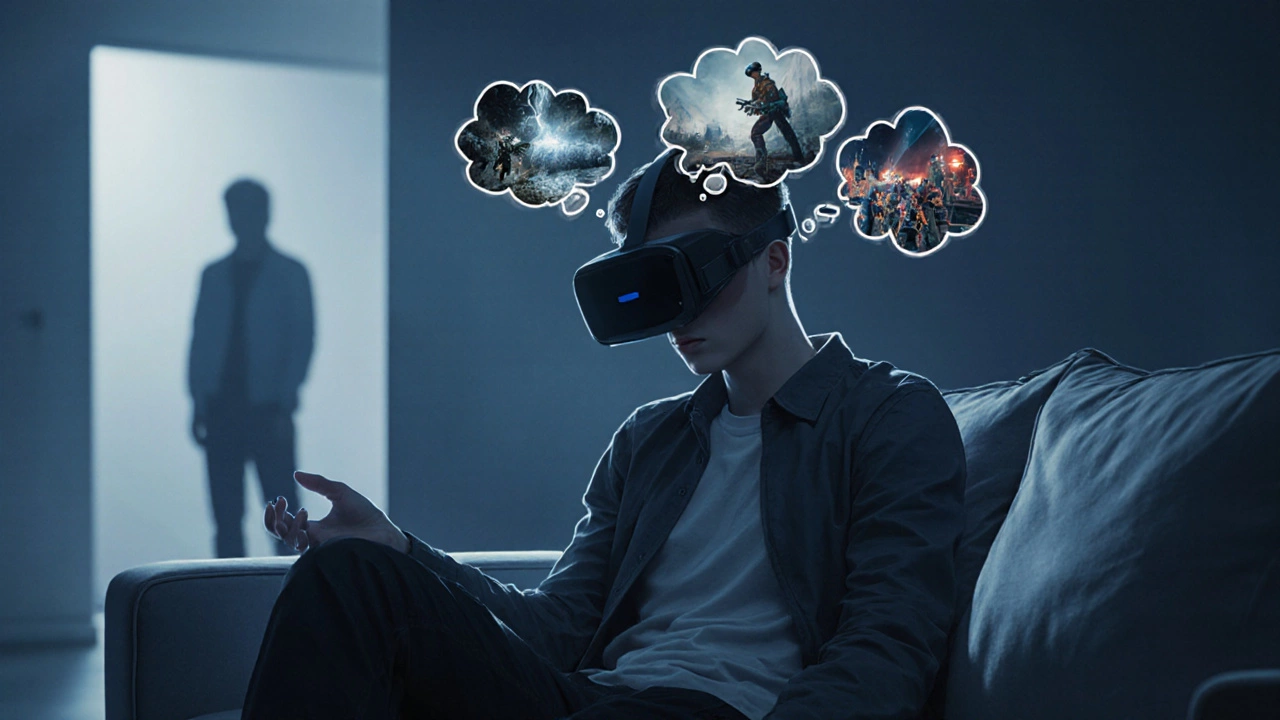What Are the Negative Effects of VR? A Complete Guide
 Oct, 25 2025
Oct, 25 2025
VR Session Timer & Break Reminder
VR Safety Tips
The article recommends a 20-minute on, 10-minute off rule. This timer helps you follow this guideline. For beginners, start with 5-10 minute sessions and gradually increase. Always take breaks to reduce eye strain and motion sickness.
When you strap on a headset and step into a virtual world, the excitement can be instant. But behind the hype lies a suite of negative effects of VR that many users overlook. This guide breaks down the physical, psychological, and social downsides, so you can enjoy immersive experiences without paying an unwanted price.
Key Takeaways
- VR can cause motion sickness, eye strain, and depth‑perception issues.
- Prolonged sessions may lead to reduced physical activity and mental fatigue.
- Psychological impacts include addiction, dissociation, and heightened anxiety.
- Proper setup, regular breaks, and ergonomic choices mitigate most risks.
- Understanding symptoms early helps you enjoy VR safely and responsibly.
What Is Virtual Reality?
Virtual Reality is a computer‑generated environment that immerses users through visual, auditory, and sometimes haptic feedback. By wearing a head‑mounted display (HMD) that tracks head movements, users feel present inside a 3‑D space that reacts to their actions.
Physical Side Effects
Most physical complaints stem from the way our bodies process motion and visual cues.
Cybersickness (Motion Sickness)
Cybersickness is the VR‑specific form of motion sickness, caused when visual motion doesn’t match the inner‑ear’s sense of balance. Symptoms include nausea, dizziness, sweating, and a general feeling of disorientation.
Eye Strain and Visual Fatigue
Eye Strain occurs when the eyes must constantly refocus on screens located only a few centimeters away. The fixed focal distance of most headsets forces the eyes to accommodate continuously, leading to blurred vision, dryness, and headaches after extended use.
Depth‑Perception Issues
Because VR creates a stereoscopic illusion of depth, prolonged exposure can confuse the brain’s depth‑perception mechanisms. Users may experience Spatial Disorientation after removing the headset, misjudging distances or tripping over objects in the real world.
Reduced Physical Activity
While some VR titles are physically demanding, many popular experiences are sedentary. Sitting for hours in front of a headset can contribute to Reduced Physical Activity, mirroring the health concerns linked to traditional screen time-weight gain, poor posture, and musculoskeletal strain.
Ergonomic Concerns
Improper headset fit can pressure the nose bridge, forehead, and ears, causing skin irritation and even temporary nerve compression. Adjusting straps, using lightweight headsets, and limiting sessions to 30‑minute blocks help alleviate these issues.

Psychological and Cognitive Effects
Beyond the body, the mind reacts strongly to immersive environments.
Addiction and Overuse
VR’s high presence factor can trigger compulsive use patterns. When users repeatedly seek the dopamine rush of novel virtual experiences, they may develop Addiction behaviors comparable to those seen with video‑game overuse.
Increased Anxiety and Stress
Intense simulations-especially horror, combat, or realistic social scenarios-can elevate cortisol levels. For individuals prone to anxiety, immersive stressors may amplify symptoms, leading to lingering tension after sessions end.
Cognitive Load and Fatigue
The brain must process multi‑sensory inputs, track objects, and manage navigation simultaneously. This high Cognitive Load often results in mental fatigue, reduced concentration, and slower reaction times once the headset is removed.
Social Isolation
Spending hours in VR can replace real‑world interactions, fostering a sense of isolation. While virtual gatherings exist, they lack certain nuances of face‑to‑face communication, potentially weakening social bonds over time.
Comparing Physical and Psychological Effects
| Aspect | Physical Effects | Psychological Effects |
|---|---|---|
| Immediate Symptoms | Cybersickness, eye strain, neck pain | Anxiety spikes, heightened stress |
| Long‑Term Risks | Reduced mobility, posture problems | Potential addiction, social withdrawal |
| Performance Impact | Decreased visual acuity after sessions | Mental fatigue, slower decision‑making |
| Mitigation Strategies | Frequent breaks, proper headset fit | Set usage limits, balanced offline activities |
How to Minimize the Risks
- Start Slow: Begin with 5‑10 minute sessions. Gradually increase duration as your tolerance builds.
- Take Regular Breaks: Follow the 20‑minute‑on/10‑minute‑off rule. Stand, look at distant objects, and hydrate.
- Adjust the Headset: Ensure a snug but comfortable fit. Align the lenses with your eyes to reduce strain.
- Optimize Lighting: Use a well‑lit room to reduce eye contrast. Avoid extreme darkness that forces pupils to dilate.
- Stay Physically Active: Alternate VR with walks, stretching, or light exercise to maintain cardiovascular health.
- Monitor Symptoms: Keep a diary of nausea, headaches, or mood changes. If issues persist, pause usage and consult a health professional.
- Choose Content Wisely: Prefer experiences with smooth frame rates (>90 fps) and low latency, as choppy visuals exacerbate cybersickness.

When to Seek Professional Help
If you notice any of the following, it’s time to talk to a doctor or eye specialist:
- Persistent nausea or dizziness lasting more than an hour after a session.
- Recurring headaches, blurred vision, or eye pain.
- Signs of anxiety that interfere with daily life.
- Difficulty disengaging from VR despite attempts to limit use.
Early intervention can prevent long‑term complications and help you develop healthier VR habits.
Future Trends and Safety Improvements
The industry is already addressing many concerns. Newer headsets feature higher refresh rates, foveated rendering (which reduces eye strain by focusing resolution where you look), and built‑in eye‑tracking to auto‑pause if you blink excessively. Developers are also integrating comfort settings-like reduced locomotion speed and optional teleportation-to curb motion‑induced nausea.
As standards evolve, we can expect clearer guidelines from health agencies, similar to those for video games and screens, ensuring that immersive tech remains both fun and safe.
Frequently Asked Questions
Can VR cause permanent eye damage?
Current research shows that short‑term eye strain is temporary. Long‑term damage is unlikely unless you use a poorly calibrated device for many hours daily. Regular breaks and proper ergonomics keep risk low.
Why do some people feel sick in VR while others don’t?
Individual susceptibility varies based on vestibular sensitivity, prior motion‑sickness history, and the headset’s technical specs. Higher frame rates and lower latency reduce the mismatch that triggers cybersickness.
How long is a safe VR session?
Experts recommend no more than 30‑45 minutes per session for newcomers, with a 10‑minute break. As you build tolerance, you can extend to an hour, but always listen to your body.
Is there a link between VR use and mental health issues?
Intense or addictive use can elevate stress and anxiety, especially with violent or horror content. Balancing VR with offline activities and setting usage limits helps protect mental wellbeing.
What hardware features reduce VR side effects?
Higher refresh rates (90 Hz+), low persistence displays, adjustable IPD (interpupillary distance), and built‑in eye‑tracking for dynamic focus all lower the chance of motion sickness and eye strain.
VR offers a thrilling glimpse into futures we can’t yet reach, but like any powerful tool, it comes with trade‑offs. By staying informed about the negative effects and applying proven mitigation tactics, you can keep the wonder alive while safeguarding your health.